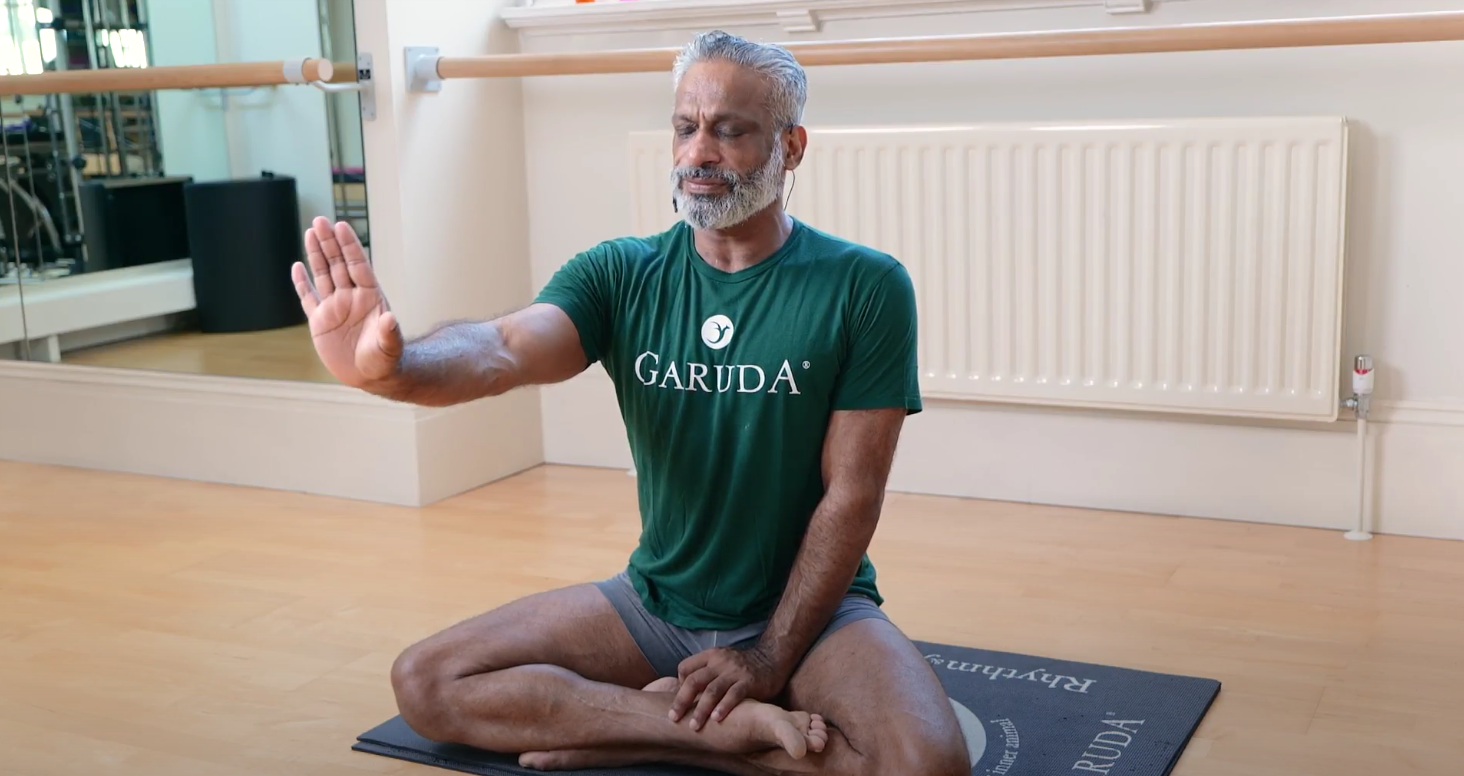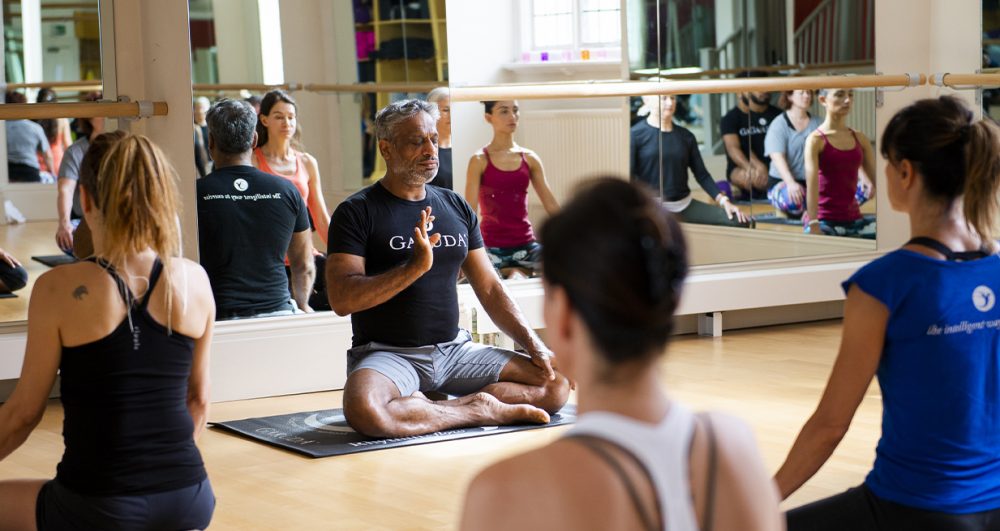March 31, 2022
What Is Breathwork & Why Is It Important Within Garuda?
Whether you are a fitness professional or are someone simply looking for a way to find a better sense of calm, you might have heard the term breathwork.
Here, we have broken down what breathwork is, as well as the science behind it and the many benefits that can be reaped from it. Not only this, but if you’re looking for a way to start practising, we’ve explained how you can do so with the Garuda method.
What Is Breathwork?
So, what is breathwork? Breathwork is an umbrella term for any type of breathing exercise. It is, to the core, the conscious control of the breath. There is full intention in every singular in-breath, pause and out-breath.
Many believe that breathwork is a practice that exclusively benefits the mind, however, breathwork improves both physical and spiritual well-being on top of this.
The Science: What Happens To The Body During Breathwork?
Looking at the biology behind breathwork will facilitate your understanding. Let’s look at the process the body goes through when we simply breathe in and out:
Breathing in:
When you breathe in, the body needs to create space in your lungs for the air. Your diaphragm will contract and move downward. Your chest muscles will move both upwards and outwards, pushing your ribcage in the same direction.
Air is then infused into your lungs through the nose and mouth. It travels through to the alveoli, which are the tiny air sacs that allow oxygen to pass through into your bloodstream.
Breathing out:
In the process of allowing oxygen to be absorbed into the bloodstream, the alveoli extract carbon dioxide from the blood.
Your chest muscles and ribs now move down and inwards, whilst the diaphragm pushes upwards. This wonderful squeeze forces the air out of the lungs, where it is released by the nose and mouth.
What happens when we control this process?
Your body allows you to breathe automatically throughout the entire day and night, whilst we are both conscious and unconscious.
When you are not conscious of your breath, your brain controls your breathing pace by determining your body’s need for oxygen. So, what happens when you consciously take control of your breath?
Depending on how you consciously adjust your breathing pace, the body will react accordingly.
Of course, it is rare that you should want to consciously increase the pace of your breathing. This can cause oxygen starvation, and also cause you to breathe out more carbon dioxide than usual. As a result, you might experience dizziness and feel lightheaded, or worse, your blood vessels could spasm.
However, deep, slow and controlled breathing has many benefits for your body. They will allow the alveoli to fully exchange incoming oxygen and outgoing carbon dioxide. In turn, this slows your heart rate and also stabilises your blood pressure.
Why Is Breathwork Important?
Breathwork can support a plethora of challenges faced in daily existence, and heal both the mind and body.
Benefits of breathwork for the body
-
Allows you to sink deeper into your movements
During inhalation, your diaphragm moves downwards to give your lungs more space for air. When your lungs are full of air, this helps to stabilise your core and also prevents a strain on the muscles and joints.
-
Activates the parasympathetic nervous system, causing a relaxed state and reduced heart rate
When you breathe deeply, the supply of oxygen to your brain will increase. This activates the parasympathetic nervous system, causing your heart rate to decrease and your blood vessels to dilate.
This combination causes your brain to sink into a state of relaxation, which is why breathwork is so important during meditation.
-
Releases endorphins, which boosts your mood and reduces pain sensitivity
When the parasympathetic nervous system is stimulated, the brain releases endorphins.
You may know endorphin as the “happiness” or “feel good” hormone, which is exactly what it is. They trigger a positive feeling in the body by relieving you of stress and tension, and also reducing your sensitivity to pain.
-
Releases trauma that has been trapped in the body
Did you know that trauma does not just affect the mind, but also affects the body too?
When you experience trauma or high levels of stress, it can overload the nervous system. This prevents you from processing the trauma, causing this traumatic energy to be stored in your muscles and other areas of the body.
Breathwork can therefore alleviate your body of this energy through the release of tension.
Benefits of breathwork for the mind
-
Boosts self-awareness and self-esteem
When you slow down your breath, you slow down the activity of your brain. Having this inner sense of control helps you to stabilise both your thoughts and emotions.
As a result, your sense of self-awareness will increase, along with your confidence.
-
Allows emotional purging and the release of negative thoughts
Much like how trauma is stored in the body, emotional stress and tension can become repressed.
Breathwork allows you to tap into that area of your subconsciousness where your emotions have become restrained. With a combination of the powerful mind-body connection and breathwork, this trauma will escape the mind.
-
Enriches your creativity through altered states of consciousness
On the topic of consciousness, breathwork facilitates inner exploration.
During practice, you may experience deep and unique sensations. This is because breathwork toys with the way in which your states of consciousness interact, causing inspiring thoughts and bursts of creativity.
Is Breathwork Safe To Practice?
When it comes to breathwork, there is a spectrum of techniques, varying in difficulty. More extreme types of breathwork may not be advised for some people, however, most simple breathing exercises are perfectly safe for everyone to practice.
If you are inexperienced in breathwork, it is advisable to go to a professional to learn proper techniques. This ensures you can practise safely, and also effectively.
How Breathwork Is Present Within The Garuda Method
The Garuda Method is a fitness system that encompasses the principles of Pilates, the breathwork and asana practices of yoga and the grace and athleticism of dance. Whilst it is inspired by these systems, Garuda is its own entity.
Whilst it is a movement method, breathwork is entirely pivotal to Garuda.
During practice, you’ll discover a wonderful marriage between the breath and the movement, unlike any other system. Sometimes the breath initiates a movement, but sometimes the movement initiates the breath. There’s a real marriage of equals in Garuda.
Every singular movement is laced with a focus on the breath in order to bring the mind back to the exercise and allow you to experience the mind-body connection in its pure essence.
View this post on Instagram
There is also a focus on kumbhakas during practice.
Kumbhaka is a crucial element of breathwork in Garuda. It refers to the retention of breath, or simply put, those sublime pauses that can happen either after inhalation or exhalation.
When we hold our breath, it activates the respiratory centre in the brain and allows a greater exchange of oxygen. In turn, the focus is improved and it gives you that quality to drop into a wonderful meditative state.
Start Your Journey With Garuda
Garuda is here to catalyse your breathwork journey. If you are ready and want to try the method yourself, there are a number of options to choose from.
Take a look at our recorded classes if you want to learn in your own time.
Would you prefer more guidance? Book an online virtual class with James D’Silva, founder of Garuda.
If you are a fitness professional and would like to learn how you can add Garuda to your repertoire, take a look at our Teacher Training courses, or email us at info@thegaruda.net to discuss this further.


